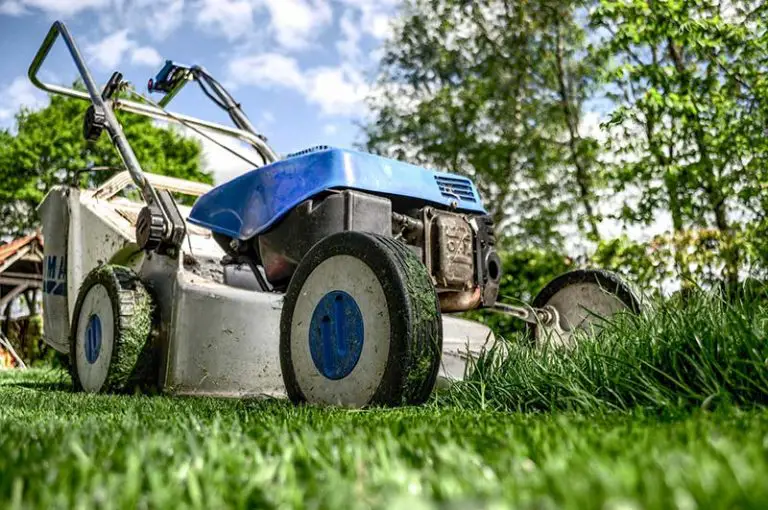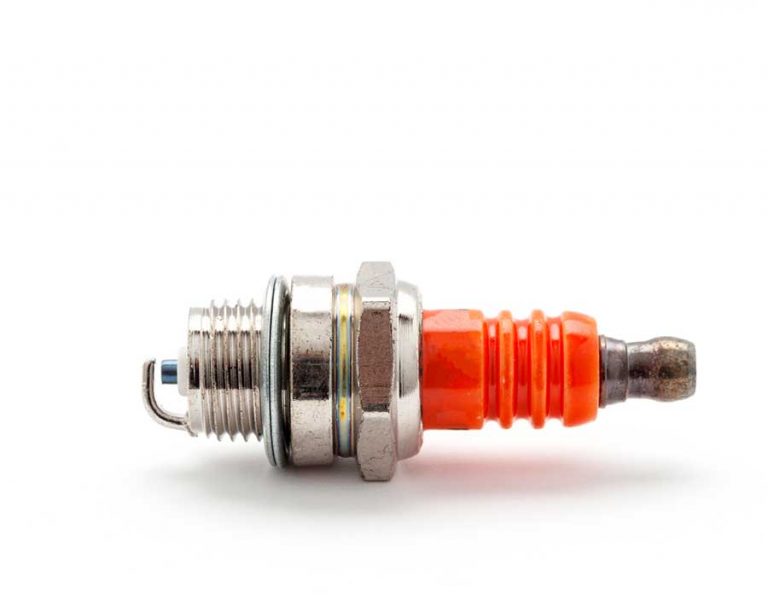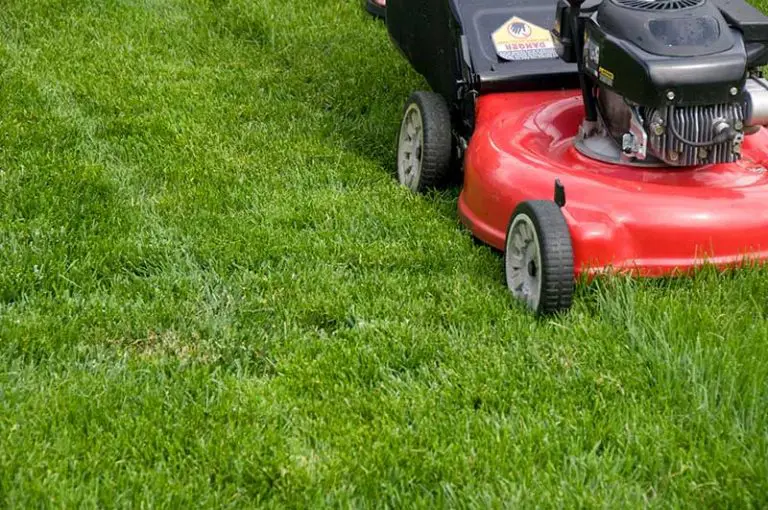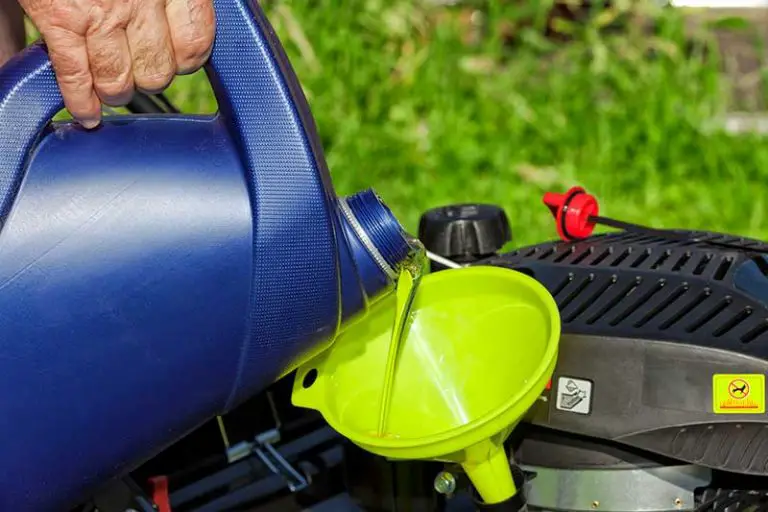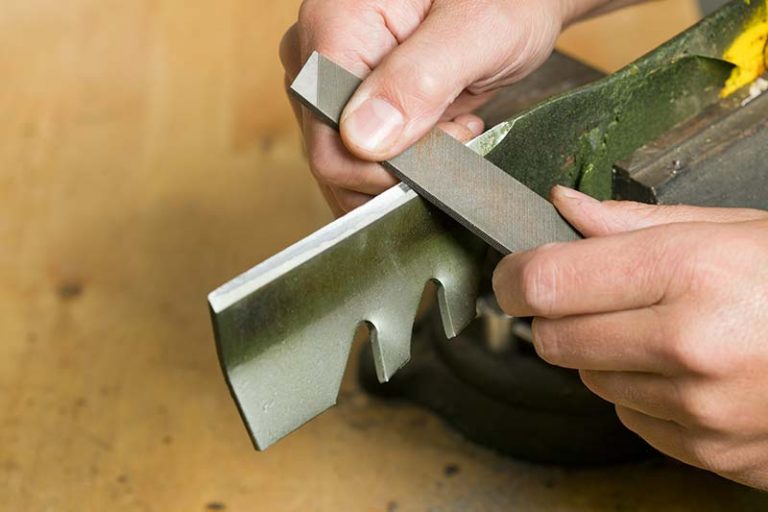Where To Spray Starter Fluid On A Lawnmower (Step by Step)
After leaving your lawnmower unused for a while, starting it can be a chore. You can also encounter issues with starting your lawnmower if it is old, not well maintained, engine blockage, cold weather, or other reasons- this is where the starter fluid comes in.
The starter spray is to be applied directly to the carburetor chambers in a light dose. You can also spray it on the intake port or the spark plug port. Starter fluid is a solution for kick-starting the lawn mower’s engine and adequately diagnosing what the problem is when it does not work as it should. This article will show you how to apply starter fluid to your lawnmower, step by step.
What Is Starter Fluid?
Starter fluid is a chemical consisting of diethyl ether, volatile hydrocarbons such as heptane, and carbon dioxide (to propel the fluid) in an aerosol spray can. It is used to start an engine and run diagnostics when it has difficulty starting.
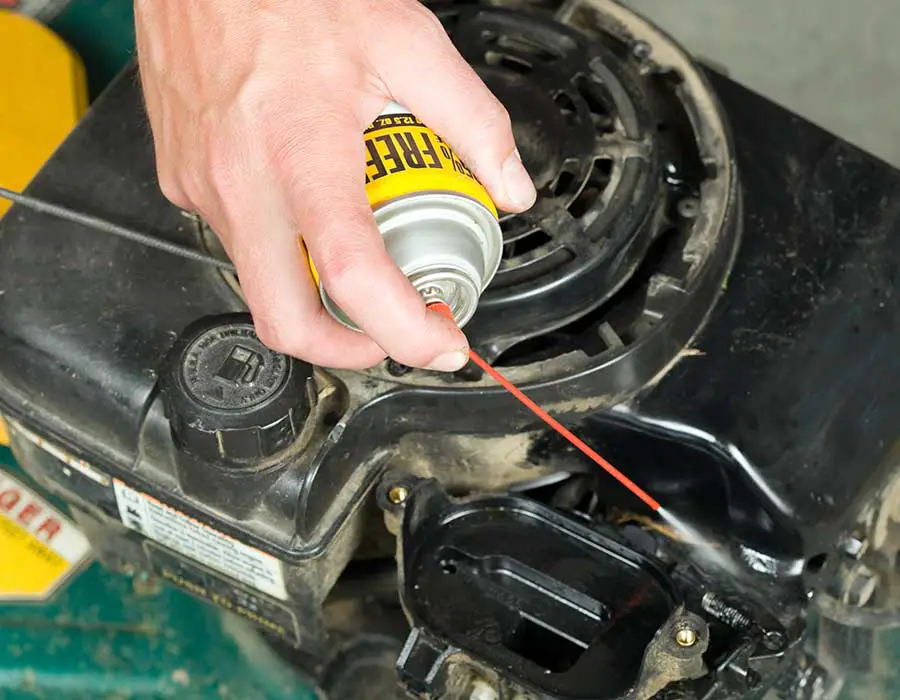
Tools Required to Apply Starter Fluid
Before starting, you need to have some tools you will work with. It is best to prep them and have them nearby beforehand. Here are the tools you should have:
- Wrench set
- Piece of cloth
- Screwdriver
- Pliers
- Collector pan
- Starter fluid (of course)
Step By Step Application of Starter Fluid
Using starter spray on your lawnmower is very simple. Follow the steps outlined and explained below for proper application, and you should have your engine starting just fine afterward.
1 – Find the air filter housing
The air filter is located near the engine, usually on the top or front of the engine. Just lift the mower’s hood if it is a riding one, or raise the cover if it is a pushing mower. For a pushing mower, you will need to unscrew the bolts and release the clasps of the body to get inside. Under the hood, you will see the black box that houses the air filter and intake.
2 – Remove and clean the air filter
The black box that houses the air filter is usually made of plastic, so you need to take it off carefully. Some of them need to be unfastened- you can use a socket wrench. Air filters are usually made of paper, foam, or a hybrid of the two materials (paper and foam). Filters can be pretty fragile, so remove them with care to avoid squeezing them. They are usually simple to remove, but some require you to use a torque wrench to undo the bolt.
3 – Cleaning the air filter
Foam filters are easier to clean and can be reused up to four times after washing. Paper filters, however, are more challenging to clean. It is best to replace them when they get very dirty. To clean a foam filter, use detergent or dish soap to wash it and let it dry. After drying, massage a little oil into the foam filter. This will help it trap debris easily.
4 – Locate and clean the carburetor
You would typically find the carburetor behind the air filter along the fuel line. It is held in place with bolts to the side or top of the engine. It is recommended that you clean the carburetor for a more easy start. To do this, spray carburetor spray on the grooves and ports, then wipe clean with the cloth.
5 – Spray the starter fluid on the carburetor chamber
Locate the opening that leads into the breather tube- this is where air enters the carburetor. Aim at this opening about 20 centimeters away and spray a light dose of the starter fluid into it.
6 – Set the engine speed and choke
Set the engine speed to the midpoint if it can be adjusted, and lift the choke to full choke.
7 – Start the engine and observe
Pull the starter string, or turn on the ignition. The engine should start within three seconds; if not, you need to diagnose what the issue could be. Usually, it is either the carburetor has a problem, or the fuel is bad. The sign of a bad carburetor is when the engine stops within three seconds. In this case, the carburetor needs to be replaced or repaired.
Bad fuel is indicated by cessation or stalling between 3 and 30 seconds. The fuel tank and carburetor need to be emptied, replacing the fuel with good fresh fuel. Bad fuel can result from dirt or water getting into the fuel or bad chemical composition from the refinery.
Safety Measures to Observe When Using Starter Fluid
Starter fluid is highly flammable and working with it requires carefulness. Here are some cautionary measures you should take:
- Use protective gear like safety goggles and hand gloves. If the content gets into your eyes, immediately run some water over your eyes and see the doctor.
- Avoid using starter fluid while the engine is hot or on.
- Work in an airy space. It is dangerous to breathe in the contents of starter fluid, so you need to work in a well-ventilated area.
- Keep a fire extinguisher nearby because it is a highly flammable chemical.
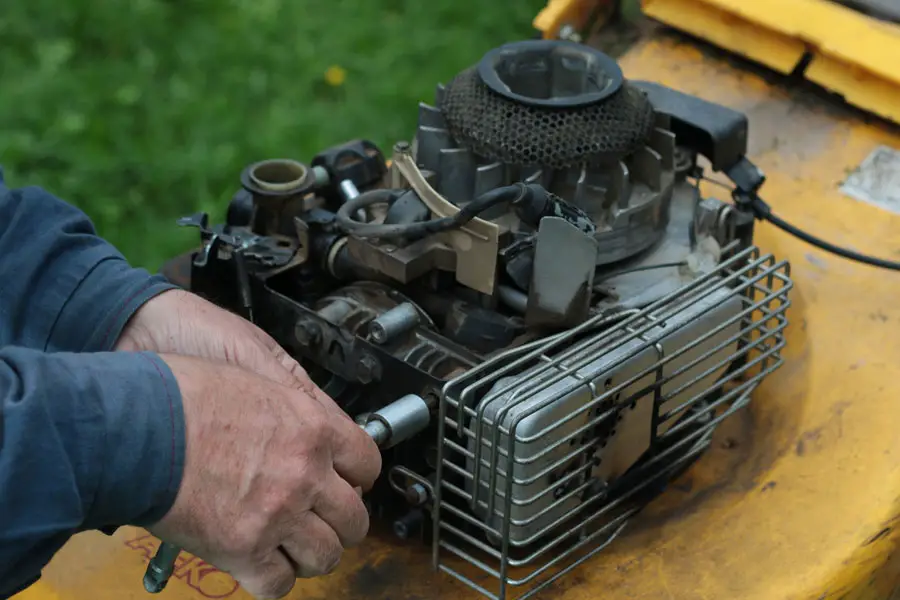
FAQs
How much starter spray is too much?
Do not use an excessive amount as that can damage your lawn mower’s engine. One or two bursts are enough to start your engine. Some manufacturer manuals give directions on the right volume of starter fluid to use.
When is it wrong to use starter fluid?
Do not use starter fluid for diesel engines and 2-cycle gasoline engines. Avoid using starter fluid too often, as it can damage the internal parts of the cylinder and make the piston wear out.


